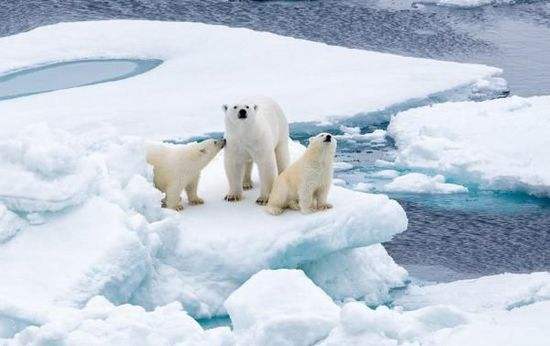Seminar: More joint efforts needed as uncertainties mount in climate governance

According to the UN Sustainable Development Goals Report 2017, the extent of global sea ice fell to 4.14 million square kilometers in 2016, the second lowest on record.
Global climate governance is at a crossroads after the United States withdrew from the Paris climate deal and a series of setbacks occurred in the multilateral process. Against this backdrop, experts recently gathered in Beijing to evaluate the prospects of the Paris Agreement, reflect on existing institutional frameworks and seek new ways to cope with climate change.
The seminar “Keeping the Paris Work Program on Track: Challenges and Opportunities” was hosted by the Brookings-Tsinghua Center for Public Policy.
Lauding the Paris Agreement as a comprehensive framework document, Jo Tyndal, co-chair of the Ad-hoc Working Group on the Paris Agreement (APA) and climate change ambassador of New Zealand, said the pact is flexible based on mutual trust and transparency. It is constantly improving, progressive and supportive of extensive participation, she said.
Zhang Haibin, a professor of international studies at Peking University, offered an in-depth analysis of the grim climate change situation.
According to the UN Sustainable Development Goals Report 2017, global temperatures continued to increase in 2016, setting a new record of about 1.1 degrees Celsius above the pre-industrial period. While the area of global sea ice fell to 4.14 million square kilometers in 2016, the second-lowest on record, atmospheric carbon dioxide levels reached 400 parts per million, a new record high.
Zhang said these figures represent the biggest global challenge facing climate negotiations: the contradiction between the urgency of the problem and the slow global reaction.
The Paris Agreement was open for signature at the UN Headquarters from April 22, 2016. On the first day, 175 parties (174 states and the European Union) signed the accord. US Secretary of State John Kerry was accompanied by his 2-year-old granddaughter when he signed the historic agreement, showing his recognition that climate change is closely tied to the future. However, the new president Donald Trump recently announced that the United States would pull out. Zhang said that this has added new uncertainties to global climate governance.
Zhang argued that leadership, a multilateral cooperation mechanism, and the innovation of renewable energy and clean technology are essential to making global climate governance effective.
Comparing climate change to an accelerating train, Tyndall said it takes time to slow down, or stop the train.
Tyndal noted that China has taken extensive measures in this regard, such as advancing energy transformation and carrying out energy conservation and emission reduction.
Qi Ye, a professor from the School of Public Policy and Management at Tsinghua University, provided more details about China’s contributions. In 2015, China invested more than $3 billion in the South-South Cooperation mechanism as part of its efforts to address climate change, Qi said. Moreover, it announced it would add another billion dollars of investment in South-South Cooperation at the Belt and Road Forum for International Cooperation in mid-May 2017.
South-South Cooperation is a crucial force in combating climate change, and China has undoubtedly played a leading role in maximizing the effect of the cooperative model, Tyndall said, adding that the country demonstrated leadership during the Paris Agreement negotiations and execution through vigorous actions.
ZHANG JUNRONG is a reporter at the Chinese Social Sciences Today.
